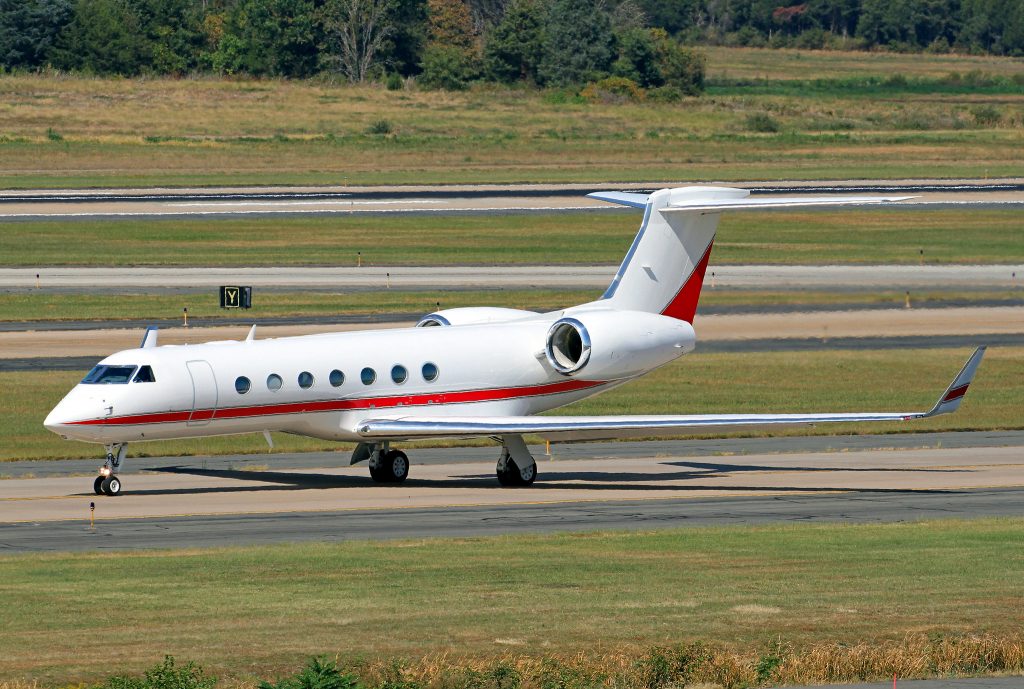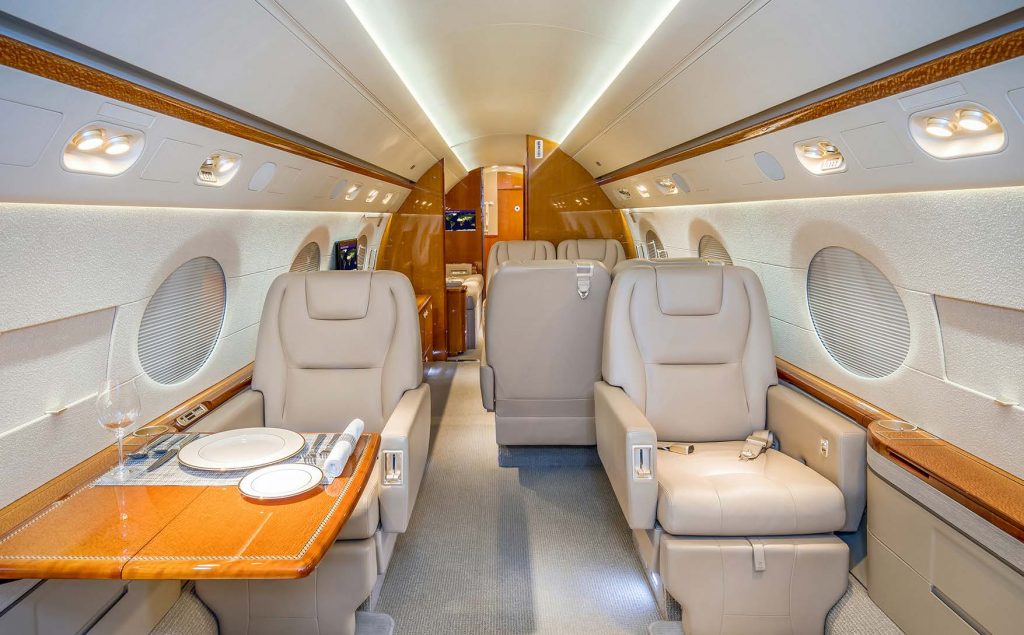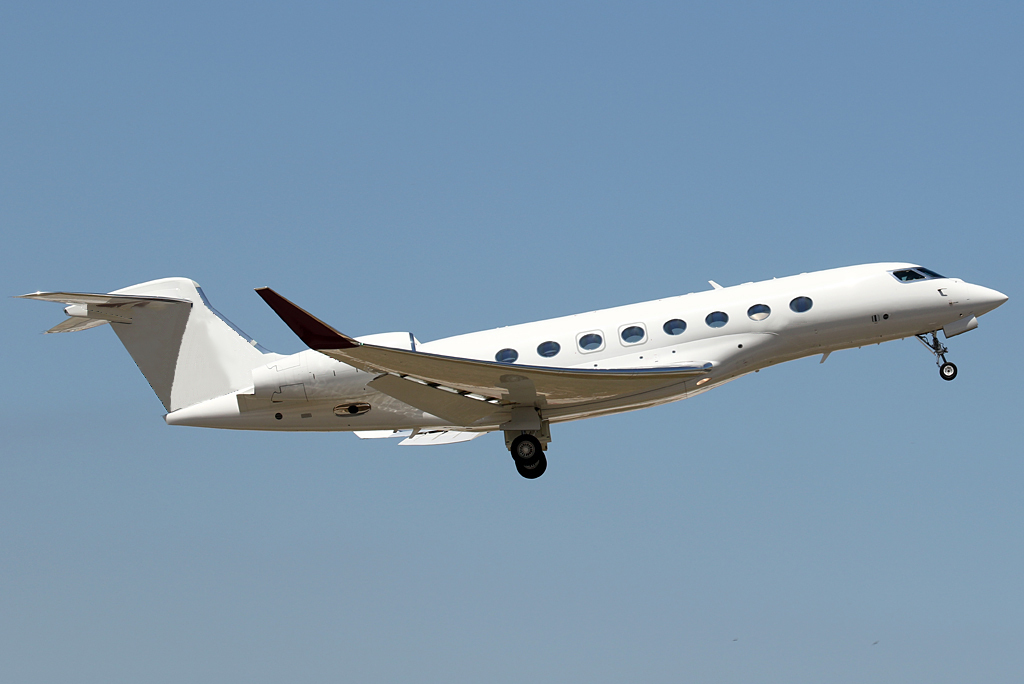Switch to:
 EN
EN
Any comparison between the Gulfstream G550 and G650 ought to begin with three simple facts:
- They can each trace their roots to the original Gulfstream I turboprop design from the late 1950s;
- They are more advanced and capable versions of the models they superseded, and;
- They both represent the last Gulfstream business jets of the pre-Symmetry Flight Deck era.
The G550 and G650 are built by the Gulfstream Aerospace Corporation (GAC), a subsidiary of General Dynamics. Both aircraft accomplish their missions with a level of reliability and performance that has earned GAC considerable loyalty among pilots, operators, and owners. In my personal opinion, GAC’s unwavering commitment to product support and customer service remains the industry’s best, not to mention remarkable aircraft reliability and performance. It is no wonder many current aircraft owners say their next aircraft will always be another Gulfstream.
About Gulfstream G550
Like all of its predecessors, the G550 evolved from previous generations of Gulfstream aircraft and in particular GAC’s first ultra long-range business jet – the GV. At its long-range speed of M0.80 the G550 has a maximum range of 6,750 nm. Over 600 of these jets have been delivered since its introduction in 2004, making it GAC’s most successful business aircraft to date.
My personal experience flying the G550, between 2012 to 2018, was very positive. During that period I flew the aircraft on short, medium, long, and ultra long-range sectors, at altitudes ranging from 39,000 to 47,000 feet and at speeds between M0.80 to 0.85. Two round the world trips, both of them westbound against prevailing winds, demonstrated the G550’s two most important attributes: reliability and performance. In between flights, the aircraft sat in its hangar for days and at times even for weeks. Other than connecting an external AC power cart every five days in order to keep the batteries charged, it never presented any issues when it was time to fly.
During the course of those six years I had a single Aircraft On Ground (AOG) occurrence. An Electronic Engine Control (EEC) unit failed and the replacement part didn’t arrive on time resulting in a 24-hour delay. Overall my assessment of the G550 is that it is an incredibly reliable aircraft, and that its performance (speed, climb, and range) is hard to match by anything other than another Gulfstream, the G650.
About Gulfstream G650
The G650 is currently GAC’s flagship business jet and it is also the first Gulfstream equipped with a flyby-wire Flight Control System (FCS). At its long-range speed of M0.85, the G650 has a maximum range of 7,000 nm. The original G650 design has been enhanced with an Extended Range version, the G650ER, which boasts a 7,500 nm range. Over 360 units have been delivered since it was introduced in 2012. At this rate it is going to surpass the G550 as GAC’s most successful business jet. Gulfstream G450/550 pilots transitioning to the G650 can do so easily as they will find the systems’ design and operation very familiar. They are also likely to quickly become fly-by-wire converts.
My personal experience flying the G650, from 2018 to date, has been very positive. During this period I have flown the aircraft on short, medium, long, and ultra long-range sectors, at altitudes ranging from 39,000 to 49,000 feet and at speeds between M0.85 to 0.90. The biggest advantages over its predecessor are the longer range and much higher cruise speeds. In fact, the G650’s Long Range speed is equivalent to the G550’s High Cruise speed. These advantages were evident on my first round the world trip in the G650 (Hong Kong – London – Bermuda – San Francisco – Hong Kong). The first sector was flown against seasonally stronger headwinds in less than 12 hours at a cruise speed of M0.88. The G650 is also the first aircraft I have flown where the manufacturer guarantees that the fuel tanks can be consistently filled to their maximum weight capacity. How is this possible? The wing tanks reach their maximum fuel weight (48,200 pounds total in the ER version) long before you run out of fuel tank volume capacity. That means that regardless of fuel density, which can vary considerably from region to region, you can always fill up the wing fuel tanks to their maximum weight capacity.
The greatest disadvantage of the G650 is that, unlike the G550, it demands far more attention when it sits on the ground for long periods of time. To keep it ready, it is necessary to power it up every three to four days and to run the engines every ten days. Otherwise you could end up with weak or depleted batteries (2 Main Batteries, 2 Flight Control Batteries, and 2 Emergency Batteries) and/or a number of nuisance FCS Crew Alerting System (CAS) messages. Some of these CAS messages may or may not clear before departure and that could jeopardize a trip. Bottom line: get those juices – electrical and hydraulic – flowing often in order to keep the G650 happy and ready to fly.
Summary
By preserving what works well, adding continued improvements, and keeping aircraft systems simple, GAC has built highly reliable aircraft. Combining that strategy with excellent product support has been the company’s recipe for success. The G550 and G650 are both technological marvels and a real joy to fly. A G550 pilot transitioning to the G650 will appreciate the higher speeds and longer range, the smoother and more precise fly-by-wire FCS as well as not having to worry about fuel density limitations. The G650’s already impressive reliability will eventually match or surpass the G550’s nearly perfect record.
The comparison between G550 and G650
| Item | Gulfstream G550 | Gulfstream G650 |
| Production start year | 1995 | 2008 |
| Production end year | 2002 | Present |
| Maximum range | 6,750 nm (12,501 km) | 7,000 nm (12,964 km) |
| Long-range speed | Mach 0.80 | Mach 0.85 |
| Baggage capacity | 226 ft³ (6.4 m³) | 195 ft³ (5.5 m³) |
| Seats | 16-18 passengers | 16-18 passengers |
| Typical seating | 13 | 12 |
| Pilots | 2 | 2 |
| Takeoff distance | 5,910 ft (1,801 m) | 5,858 ft (1,876 m) |
| Landing distance | 2,770 ft (844 m) | 3,182 ft (970 m) |
| Payload | 2,500 lbs (1134 kg) | 1,755 lbs (796 kg) |
| Cabin volume | 1,669 ft³ (47.2 m³) | 2,583 ft³ (73.1 m³) |
| Cabin width | 7.3 feet (2.2 m) | 8.5 feet (2.6 m) |
| Cabin height | 6.2 feet (1.9 m) | 6.4 feet (2 m) |
| Total variable cost per hour (US) | US$ 2,616 | US$ 2,821 |
| Average charter cost per hour (US) | US$ 9,650 – US$ 11,000 | US$ 11,600 – US$ 13,900 |
| Average charter cost per hour (Brazil, Argentina, Chile) | US$ 10,500 – US$ 13,650 | Not available |
Passengers transitioning from the G550 to the G650 will appreciate the even lower cabin pressure altitudes, the bigger windows, the wider and quieter cabin…as well as the reduced flight times as they cover large distances of the globe at 9/10th the speed of sound.
Flapper’s partner fleet counts both G550 and G650 aircraft, available for charter in multiple locations across Latin America, Europe, and the US. You can send your own quotation directly through our website or get in touch with our team at support [@] flyflapper.com






